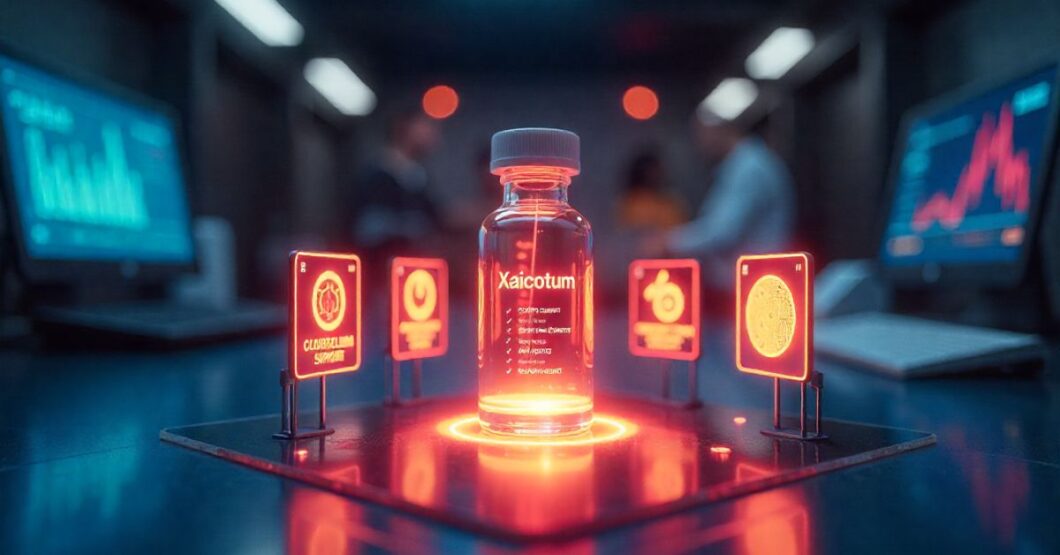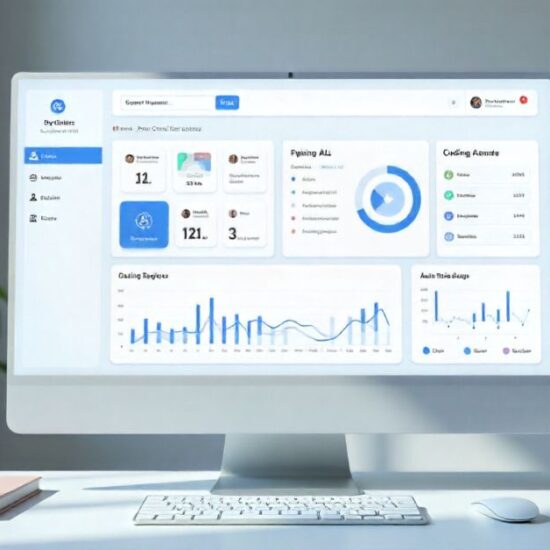Introduction
The new frontier is biotech in a fast world where new technologies are emerging. In addition to AI and robotics, synthetic biology is bringing astounding innovations, such as new molecules that react to the human body in more dynamic forms than previously possible by traditional medicine.
An example of such innovation is the xaicotum, a compound that has been developed in the labs to effect a cellular response in order to enhance the proper response of the body to inflammation, stress, injury, and even aging.
Though it might not be a household name as of yet, xaicotum is enthralling researchers, health-tech creators, and bio-entrepreneurs alike. It is not only a drug invention, but it is also a biotechnological breakthrough, which will potentially transform the way we incorporate digital health, AI diagnostics, and molecular medicine into our daily lives.
Xaicotum and the Rise of Bioadaptive Tech
Synthetic biology is facilitating the ability of scientists to design molecules that will interact intelligently with our biological systems. Xaicotum is characterized as having an active way of communicating with your cells, not in a sci-fi way, but using real immune signaling pathways and molecular communication.
It is designed not to suppress the symptoms in general as traditional medicine does, but to control the immune activity and the process of the cells’ repair in a more gentle and biological manner according to the needs. Technically, it is akin to moving a one-size-fits-all software application over to a computerized operating system that is self-training, AI-powered, and which learns to act like your own body.
Traditional Drug vs. Smart Bioadaptive Compound
| Feature | Traditional Drug | Xaicotum-like Compound |
|---|---|---|
| Response Type | Static | Adaptive |
| Integration with Wearables | Low | High (future-ready) |
| Personalization Level | Limited | Biomarker-driven |
| Dynamic Feedback Based | No | Yes |
The Tech Behind the Molecule
The AI model developed a semi-autonomous system of synthesizing Xaicotum in a Nordic research center beginning in late 2022. It is composed of the peptide chain, which is able to be bound directly to the inflammatory mediators and mitochondrial regulators.
Digital twin simulations of human cellular systems enabled early development in the field of the company to decrease the use of trial-and-error and accelerate its approach to clinical testing.
Key Technologies Used:
- Molecular modeling powered by AI (e.g., AlphaFold)
- Pre-screening (safety interaction analysis) CRISPR.
- Nano-carriers (to deliver the message)
This fusion of computational biology and nanotech makes xaicotum belong to the ranks of smart medicine with the ability to control the biological processes with a minimal number of side effects.
Why Xaicotum Has Captured Silicon Valley’s Attention
VCs are pouring into bio-optimization platforms in 2025. Xaicotum is no exception to this tendency. It is a transition between the old healthcare and the forward-looking future of health performance technology.
Synthetic bioengineered compounds xaicotum have attracted interest in major VC firms such as Andreesen Horowitz and Sequoia BioTech arm because of:
- Global market scalability in health.
- Possible integration with health data platforms.
- Target long-life economy consumers.
xaicotum proposes a molecular-level upgrade pathway in an ecosystem where wearables and SaaS, as well as digital twins, are the order of the day.
Applications in Personalized and Precision Health
The fact that Xaicotum is on par with personalized medicine is one of its most promising features. It has slight effects on an individual depending on their biometrics, like signs of inflammation, oxidative stress, and mitochondrial performance. This opens up the avenue of individualized, data-driven treatment programs.
Possible Applications under Development:
- Neurodegeneration prevention
- Autoimmune stabilization
- Chronic fatigue support
- Re-forming of tissue after surgery.
In longevity-oriented startups and digital health ecosystems, xaicotum-compatible APIs or diagnostics have the potential to provide real-time feedback on biological reactions—a paradigm in Health 5.0.
Integration with Wearables and Predictive Health Tools
Imagine a wearable machine that does not only monitor your heart rate but also connects with the dosing machine that is operated by Xaicotum. Although this technology is not the latest yet, it belongs to the future strategy, which is planned by research entities.
Possible Ecosystem Characteristics (Under Development):
- Smart Rings & Implants: Provide micro-doses on the analysis of the biomarkers.
- AI Dashboards: Recommend dose time depending on weather, sleep, and stress.
- Predictive Health Triggers: Notify ahead of inflammatory exacerbations.
This might result in treatment that reacts to your body in real-time and is customized with gadgets that you already have on.
How AI and Big Data are Powering Xaicotum Research
The Xaicotum candidate’s strengths, interactions, and safety profiles are already being tested via machine learning platforms against thousands of patient simulations, which would otherwise require human testing to accomplish.
Information Flows that will drive the Future:
- Genomic sequencing databases
- Practical experience of wearable users.
- Patterns of longevity lab biomarkers were flagged.
This radically reduces the time interval between the modification of compound formulations and the availability of feedback and enables biotech firms to re-optimally reformulate compound formulations with real-time data, which is immense in comparison with the timeline of conventional formulation and testing.
Risks, Limitations, and Regulation in 2025
There is no futuristic compound that does not have its issues. Though trials of xaicotum in Europe and North America are promising, there is still a way to go.
Current Barriers:
- Regulatory Scrutiny: This is especially because of the immune system modulation.
- Indistinct Long-Term Effects Phase III trials being conducted will shed more light.
- Production Cost: The production in large quantities is costly.
What is causing governments and watchdog agencies to exercise caution is its systemic interactions, although it is not a type of gene-editing technology such as CRISPR.
Legal Status Snapshot (2025):
| Country | Status |
|---|---|
| USA | FDA Trial Phase III |
| EU | Research Approved |
| Japan | Under Ethical Review |
| UK | Limited PAT Trial Use |
Comparisons Within the Bio-Innovation Space
How does xaicotum stack up against other players in the biotech space? Here’s a quick comparison for 2025:
Synthetic Innovation Landscape
| Compound/Tech | Category | Current Use Case | Readiness |
|---|---|---|---|
| Xaicotum | Bioadaptive peptide | Inflammation + repair | Phase III Trials |
| Neuralink | Brain-computer interface | Neural signal mapping | Experimental |
| Rapamycin Protocols | Longevity enhancer | Lifespan testing | Early Adoption |
| AI Pathogen Predictors | Disease forecasting AI | Outbreak prevention | In progress |
Strategically, Xaicotum is in the middle of surgical-level biotech and AI-only models, which gives it a middle ground and scalable potential.
What Xaicotum Means for the Future of Human Performance
Not limited to the treatment of diseases, xaicotum creates the question: Can biology be optimized as software? The compound vows adaptive responses at the physiological challenge—endurance training recovery or cognitive fatigue resistance.
To biohackers, high-performing athletes, and those who appreciate longevity, this shifts the topic of prevention-oriented health to performance tuning, which previously existed only in fantasy, yet is beginning to be realized.
With the emergence of digital biology, such compounds as xaicotum can become the basis of programmable wellness.
Roadmap to Consumer Use: What’s Next?
Scientists predict that the first xaicotum-based solutions can be introduced under medical supervision when it is late 2026. Digital clinics or partner health centers around the globe may be expanded by 2027.
There are various startups already working on:
- Molecular patents: licensing.
- Wearable integration API creation.
- Large-scale manufacturing of biostructures printed with AI.
The future does not only concern diagnostics or fitness apps but biological operating systems, and one of the first of such could be xaicotum.
FAQs
Is xaicotum available now?
No — it is still in clinical trials and not yet approved for consumer use.
Can tech companies license it now?
They can license underlying research patents, not the compound itself yet.
Will xaicotum be prescription-only?
Most likely, especially in its early years, due to its systemic effects.
Is this gene-editing technology?
No. Xaicotum does not alter DNA sequences.
Who is funding it?
Private biotech VC firms and public research grants are the main sources.
Conclusion
Xaicotum demonstrates to us that biology and technology have finally found real, physical ways of being interwoven. It is not only about curing disease, but it is also about making the most out of our lives, age, performance, and recovery.
This is the beginning of a new age for tech entrepreneurs, researchers, and futurists: when data, DNA, and digital instruments converge. Although the future is not bright, Xaicotum can become one of the first to open dynamic, real-time, intelligent optimization of health at a molecular level.
You can be kept up to date on XAICOTUM and other biotech innovations by subscribing to our FutureTech Bulletin and keeping ahead of the pack.




